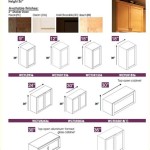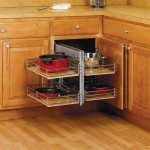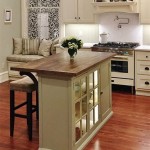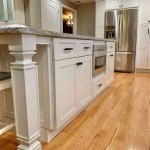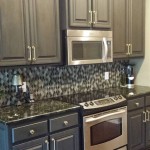Where To Place Handles On Kitchen Cabinets: Essential Aspects to Consider
Determining the optimal placement for handles on kitchen cabinets is crucial for both functionality and aesthetics. By considering factors such as ergonomics, accessibility, and visual appeal, homeowners can create a kitchen that is both efficient and stylish.
This article explores the essential aspects of where to place handles on kitchen cabinets. From understanding the different types of handles to strategically positioning them for maximum usability, readers will gain valuable insights to guide their decision-making process.
1. Types of Handles
The first step in determining handle placement is choosing the type of handle that best suits the cabinet design and personal preferences. Common handle types include:
- Pulls: Horizontal bars or loops that are mounted on the face of the cabinet.
- Knobs: Small, round or square protrusions that are mounted on the cabinet door or drawer.
- Cup Pulls: Recessed handles that are mounted on the face of the cabinet, creating a cup-like shape.
- Edge Pulls: Long, narrow handles that are mounted on the edge of the cabinet door or drawer.
2. Ergonomic Considerations
Ergonomics plays a vital role in determining handle placement. Handles should be positioned to promote comfort and ease of use:
- Height: Handles should be placed at a height that is comfortable to reach, regardless of the user's height.
- Distance: Handles should be spaced appropriately to avoid interference with adjacent cabinet doors or drawers.
- Shape: The shape of the handle should fit comfortably in the hand and provide a secure grip.
3. Accessibility
Accessibility is paramount, especially in kitchens with limited space or frequented by individuals with mobility impairments:
- Clearance: Handles should have sufficient clearance to allow for easy opening and closing of cabinets, even when fully extended.
- Safety: Handles should be positioned to prevent tripping or collision hazards.
- Reach: Handles should be within reach of users of all ages and abilities.
4. Visual Appeal
While functionality is essential, the placement of handles also impacts the overall aesthetics of the kitchen:
- Balance: Handles should be distributed evenly to create a visually balanced appearance.
- Focal Point: Handles can be used to draw attention to specific features of the kitchen, such as the sink or range.
- Style: The style of the handles should complement the overall kitchen design, from traditional to contemporary.
Conclusion
By considering these essential aspects, homeowners can optimize the placement of handles on kitchen cabinets for both functionality and aesthetics. Understanding the types of handles, ergonomic principles, accessibility requirements, and visual appeal will empower individuals to create a kitchen that is not only practical but also a stylish and welcoming space.

Cabinet Hardware Placement Guide

How To Place Cabinet Knobs Pulls

Learn How To Place Kitchen Cabinet Knobs And Pulls Cliqstudios

How To Place Cabinet Knobs Pulls

The Ultimate Guide For Cabinet Hardware Placement And Sizing Kitchen Inspiration Design

How To Install Cabinet Handles Ultimate Stress Free Tips

Comprehensive Guide To Cabinet Hardware Size Placement Handles More
Cabinet Hardware Placement Where To Put Knobs And Handles Vevano

Cabinet Hardware Placement Guide

Learn How To Place Kitchen Cabinet Knobs And Pulls Cliqstudios
Related Posts

